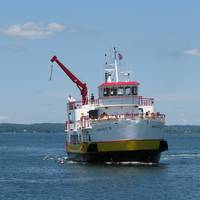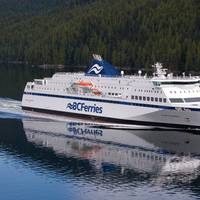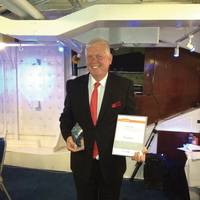The Training Implications of Subchapter M

It’s a major understatement to say that Subchapter M is top of mind for workboat operators. While most would agree that the new regulations will raise the level of safety and operational sophistication, most would also likely agree that with change comes uncertainty, cost and effort. Thus it was no surprise that at October’s national meeting of the American Waterways Operators, discussions were dominated by Subchapter M and its implications for operators. As a former faculty member at a large research university and someone very focused on training in the maritime industry…
New Plan Pledges Ferry Safety Lead

Interferry has unveiled a strategic plan promising to put safety issues at the heart of its work as the voice of the worldwide ferry industry. The pledge came at the global trade association’s 41st annual conference in Manila – a venue chosen to spotlight the challenges of domestic ferry safety in developing nations. According to Interferry, the plan signals its overriding ambition to help lift ferry safety in all parts of the world to the very high standard already in place in North America and Europe, where casualties in recent decades have been extremely rare.
SailSafe: A SEA Change for the Better

BC Ferries has improved its safety record, operational practices – and at the same time, its bottom line. In 2007, British Columbia Ferry Services Inc. (BC Ferries) initiated a union-management joint endeavor to create a world-class safety culture. This program, coined SailSafe, addressed a wide variety of safety-related aspects of BC Ferries’ culture and operational practices. By almost any measure, SailSafe has been a tremendous successf. Although difficult to precisely correlate any one of the many facets of SailSafe to operational statistics…
The Magic Ingredients of a Healthy Safety Culture

This is the second in a series of Maritime Reporter and Engineering News articles on Safety Culture in the maritime industry. The first article, which appeared in our October, 2013 edition, discussed the importance of management leadership, training, measurement, a focus on learning rather than blame, and continuous reflection on safety. In this second article, safety culture expert Captain John Wright discusses the key ingredients of a healthy safety culture. I had the good fortune of meeting Captain Wright because of his involvement with the BC Ferries SailSafe project.
Safety: A Shift in Culture

“Safety Culture” is one of those terms that is used a lot in the maritime industry. We all think it is important, and every operator wants a “good” safety culture. But how does one get it, and then keep it once it is there? This is the first of a pair of articles looking at safety culture in the maritime industry. What is Safety Culture? The IMO tells us “An organization with a ‘safety culture’ is one that gives appropriate priority to safety ... This is a fair, but arguably limited description. Safety culture is not something that a vessel operator either has or does not have.
Sail Safe BC Ferries’ Safety Initiative

BC Ferries cut time loss injuries in half; it reduced serious injuries by two-thirds; it slashed annual insurance claims costs by more than three-quarters. What are you waiting for? Can a vessel operator completely reshape its safety culture? Can it transform communications, training, operational practices and even employee engagement? And most importantly, if an operator is able to make such sweeping changes, what measurable difference will it make? It turns out it can make a huge difference to almost every meaningful key performance indicator…





